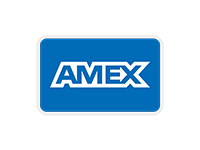
Important DC Advisory
Do NOT use cheaper "train-set"-type controllers with any of your Rapido locomotives. Several models of controller are notorious for voltage spikes and they WILL destroy your locomotive. There is no “if” about it. We will try to help you if we have the parts, but we are not responsible for locomotive damage due to voltage spikes in your power supply. As well, we will not repair any Rapido locomotive damaged by any "train-set"-type DC controller unless you have retired the controller. Otherwise the damage will likely reoccur. “Train-set”-type DC controllers should not be used with any modern model locomotives.
General Problems and Inquiries
If your model arrives with damage or there is any other issue, the best thing to do is to contact our support team. They take care of all of our warranty repairs and they are all swell guys. The toll-free number is 1-855-LRC-6917 (1-855-572-6917) (outside North America, + 1 905-474-3314 or 905-474-3324). You can also email us – click here.
Function Issues on Digitrax Systems
If you operate with a Digitrax DCC system and your DCC loco does not seem to be responding as it should, please try the fix described below before contacting us. It may save you some time and aggravation! Apparently, some Digitrax systems store the address of every single loco that they’ve ever used on them, and regardless of whether the loco was dispatched or not. Once this memory fills up, any new locos that attempt to be used by that system exhibit very unusual behavior including non-working functions and odd responses. The solution to this is easy. All you need to do is clear the memory in your system. This is done by clearing slot #36; see the instructions below. Once you’ve done this, you’ll likely find that your loco operates exactly as you expected it should. General Instructions for Closing Command Station Option Switches (for specific instructions for your command station and throttle, see the instruction manual for your equipment):
- On the command station, set the MODE toggle switch to the OP (center) position.
- Using your throttle go into Switch Mode
- Enter the Option Switch number you wish to change (in this case 36).
- Press the “c” key on the throttle.
- You will hear a beep.
- On the command station move the MODE toggle down to SLEEP then back up to RUN.
- Using your throttle, turn Track Status back on.
For more information, see this page from Digitrax’s web site.
2011 release F9B Operating Manuals and Diagrams
2021 release F9B Operating Manuals and Diagrams
The Following Issues Relate To Pre-2015 Releases Of The Fp9a And Fp9b Locomotive. Locomotives Released In 2021 Have Updated Programming In The Decoders.
F9B Sound Systems
The ESU LokSound decoders fitted to our HO F9B locos utilize F8 to turn on the sounds. On our FP9A locos the sounds come on automatically on sending a throttle signal. This can create an issue when the locos are run together in consist as pressing F8 would mute the A-unit while at the same time turning on the power in the B-unit. The solution is to program the following CVs in your F9B (in this order): CV31 = 16 CV32 = 2 CV387 = 32 This will make the sounds in F9B come on during powering up, so the sound will already be running when your FP9A starts to growl. Both units will then respond to sound commands together. There is a small bug in the sound file that causes the engine to stop when it is moving with the sound on and you press F8 to turn the sound off. This set of CVs corrects this problem. Please program the following CVs in this order: CV31 = 16 CV32 = 3 CV303 = 0 This will solve this issue. Adjusting Decoder Functions Our FP9 locomotives feature a Soundtraxx Tsunami decoder that has been custom made to our requirements. one of the features that we have incorporated into the decoders is what we are terming the "Straight to 8" function. By pressing F3 when you start accelerating the sounds will automatically ramp up through the notches until they reach Run 8 - full throttle. This feature allows you to duplicate either a hard accelerating passenger train or a hard lugging freight train. On page 11 of the FP9 manual (download link below) we mention that the sounds will throttle down to idle as soon as you start to decelerate. Unfortunately, the final programming did not quite work out as we intended! When throttling down from full speed the sound setting will remain at full throttle until speed step 0 is reached if F3 is active. Turning F3 off while running will return the the decoder to normal sound operation and the prime mover sounds will notch down normally with a reduction in throttle setting. If you would like to have the motor sound go directly to idle as soon as the throttle is reduced then simply program in a little deceleration momentum (CV4) (We suggest trying a value of 50 to start - see the manual for your DCC system on how to do this. Higher values will increase the distance that the train coasts). Once you have added the momentum then just shut the throttle off and allow the train to coast into the station - just like the real thing! Of course, this may take a little practice to get the distances correct, but real engineers have exactly the same issue! Function Mapping and CV Settings Soundtraxx has provided a function mapping chart for those who would like to have this information for their own programming. Unfortunately it came too late to be included in our manual, but you can download the PDF file here. A reasonably complete listing of CV settings used in our decoders is available from Soundtraxx's site or can be downloaded directly by clicking here.
GMDD F7B & F9B ESU Non-sound LokPilot File
- Click here to download the LokPilot V4.0 DCC file.
- Click here to download the LokPilot V5.0 DCC file.



